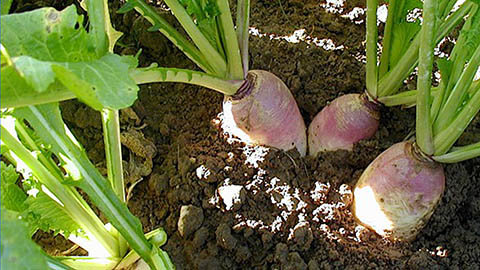Bar Tech October 2020
Good grass management now can extend the grazing season and significantly improve grass utilisation, therefore allowing a reduction in winter feed and housing costs.

Good grass management now can extend the grazing season and significantly improve grass utilisation, therefore allowing a reduction in winter feed and housing costs.
As Winter takes hold, day length and light intensity reduces as does air and soil temperature, resulting in a steady reduction in grass growth rates. Generally, clovers, brassicas and perennial grass species slow down first, then hybrid and Italian ryegrasses, followed by Westerwold ryegrasses as the last to stop. In some mild winters, where soil temperatures do not drop below 4OC, these short-term species may continue to grow.
Now is a great time to review the grass performance on your farm for the year. If poorly performing or underperforming fields are identified, take soil samples to highlight soil fertility issues and check fields for soil structure problems. Create a plan to rectify along with pasture renovation or reseeding in the spring.
Your grass management plan now will depend on the ages of the sward, sown species, and livestock requirements as well as considering the requirements for spring 2021. Good grass management now can extend the grazing season and significantly improve grass utilisation, therefore allowing a reduction in winter feed and housing costs.
An ‘establishing sward’ is one which is less than 12 months old. For the recent summer reseeds, carrying out a ‘pluck test’, will show if a sward is ready to be grazed. Follow the guide on how to carry out a pluck test. If the leaves break off and the roots stay in the ground, the pluck test is passed, and the ley is ready to graze.
Secondly, make sure that the ground is firm enough to carry livestock and never graze this before the grass plants have produced their second tiller. If the ground is firm and you add livestock, remember the first grazing is about managing the sward and encouraging tillering, not about feeding animals. Always pick the lightest stock class available and do not graze below 7cm at this time of year. Your earlier spring reseeds will be better established and may cope with larger animals but should be treated with equal care and attention to encourage further tillering (especially if they have been cut rather than grazed).
Within a rotational grazing platform, thoughts will now turn to spring requirements. The first fields that will be grazed in spring should be the first to be rested in the winter. It can take a perennial ryegrass plant 1 month to produce one new leaf during Winter (compared to 24 days for three new leaves in summer), so paddocks should be rested for at least 4 months during the winter period. Paddocks should be grazed to around 1500kg DM/ha (~4cm) and no lower before resting. In an average year, this will be in October/November with livestock either being housed or moved to sacrifice fields, brassica swards or deferred grazing.
Where excess growth occurs in a mild autumn, and ground conditions haven’t allowed for mowing, sheep are an excellent tool for removing surplus growth. This is crucial to prevent a build-up of low-quality or dead grass for the spring sward when stock is returned to the rotational platform. Again, livestock should be removed in December/early January or in plenty time to allow the sward to recover.

Brassica crops are widely utilised throughout the UK to supplement diets when growth is limited in animal production systems. This can be summer or autumn/winter and as well as being capable of producing high yields of high-quality forage (ME 10.5-13 MJ, CP 16-24%), they act as a break crop during pasture renewal. Brassica can help with weed, pest and disease reduction and create better soil conditions and cleaner seedbeds for establishing new pastures.
Forage brassicas lack structural fibre therefore a source of coarse fibre from silage, hay or straw should be available to add into grazing areas to maintain rumen function and prevent acidosis and bloat. You should ensure that all feed bales (silage, straw) are placed in the field prior to the start of the grazing period and before wet autumn/winter conditions occur. It is important to include a ‘lie-back’ area (this could be an adjoining grass field), to keep the animals clean, give them somewhere to lie down and allow their feet to dry.
For example, at 30% dietary inclusion, a stocking density of 18 cows or 25 youngstock/ha for 100 days should be achievable with kale crops producing 11 t DM/ha. Stubble turnips with a typical yield of 5.6t DM/ha should support approximately 5 cows or 7 youngstock/ha for 100 days. If the brassicas are 70% of the diet, the same kale crop will feed 66 ewes, 51 lambs, 10 suckler cows or 11 store cattle/ha for 100 days. The stubble turnips will support 44 ewes, 34 lambs, 6 suckler cows or 7 store cattle/ha for 100 days. The most efficient utilisation of grazed brassica crops is when strip grazing with an electric fence, so stock is allowed a relatively small fresh crop area each day.
Download the Barenbrug Brassica & Forage crops guide for more advice to help you grow, manage and feed your brassica crops
Discover our range of grass & forage mixtures for the agriculture sector. Our premium agriculture grass seed range, contain the latest varieties and innovations from Barenbrug.
Discover our range of grass & forage mixtures for the agriculture sector. Our premium agriculture grass seed range, contain the latest varieties and innovations from Barenbrug.
Discover our range of grass & forage mixtures for the agriculture sector. Our premium agriculture grass seed range, contain the latest varieties and innovations from Barenbrug.